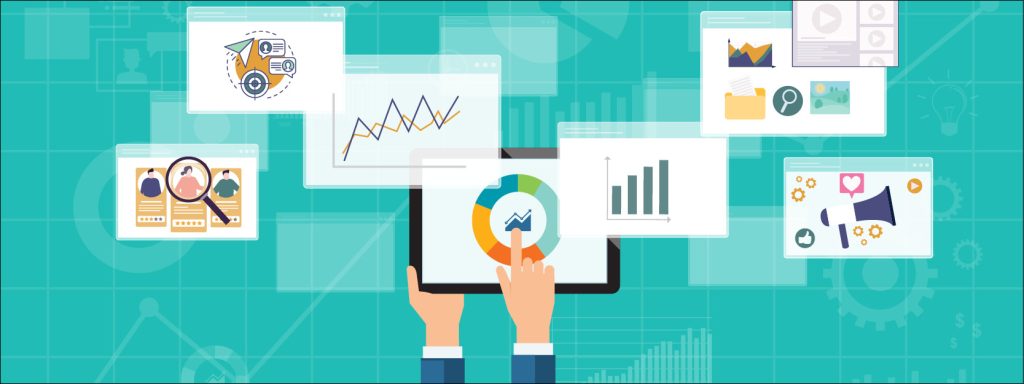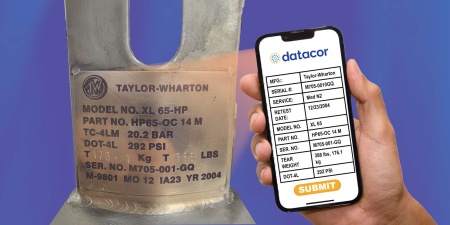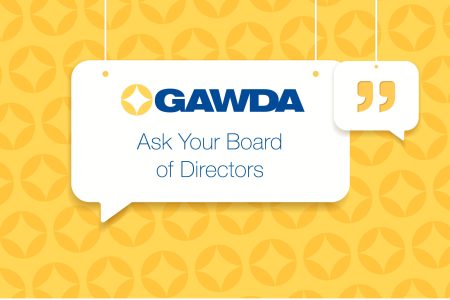Many small to medium-sized B2B companies deal with the same problem, day after day, year after year.
They’ve long understood the value of marketing and its role in helping gain exposure for their brands, drive traffic to their websites, and generate leads for their sales teams.
But they often lack the financial backing to do it right.
Any good marketing program requires an investment on three primary fronts: labor, technology, and advertising.
Let’s review how SMBs can get the biggest impact from lean marketing budgets.
Vision vs. Reality
What should your marketing budget be?
That’s an age-old question, but important, nonetheless.
The rule of thumb varies by industry. B2C companies tend to spend between 5-10% of projected revenue. B2B companies usually are a bit more conservative – typically spending between 3-5%. Startups or emerging companies are more aggressive, sometimes eclipsing 20%.
You always need to start with a plan at the beginning of your fiscal year, whatever the number.
In doing so, you establish goals and expectations, set and control cost, confirm your software and technology, understand the work to be done and who will do it, and review how you will measure success.
Always make sure your goals and objectives meet the SMART criteria (Specific, Measurable, Attainable, Realistic, Time-Bound), which improves the likelihood of them being met.
Labor
Labor is the part of your budget devoted to getting your marketing work done. This can come in the form of in-house internal staff members, an agency partner, specialty freelancers, or a combination of all three.
In-House Talent
By hiring full-time staff, you’ll have more time and resources available to get work done. The downside is that it’s usually impossible to find full-time professionals – within budget – that span the many skillsets in today’s complex digital world.
Consider someone who can strategize, produce videos, code, write long-form content, build workflows that connect marketing and sales activity, analyze data, and manage social media channels with a personality and brand-relevant voice.
Many companies find talent that can support many of these duties and then outsource the rest.
Freelancers
The marketplace is flooded with freelancers today – some of whom are highly talented. Many freelancers focus on very specific niches.
When measuring cost, don’t just consider the out-of-pocket hourly or project-based rates of the freelancer but also the time it takes your internal team to find, vet and manage those relationships.
Freelancers are typically best suited for special skills, or, when temporary, special projects require more hands-on deck.
Agency Partner
With an agency, you don’t just get one expert – you get a whole team. Agencies tend to have rich tech stacks that you can and should take advantage of, too.
Plus, when combining all the team members and all their clients, there’s a ton of experience that can be leaned upon to help your business solve complex marketing challenges.
Combination
Unfortunately, it’s impossible for anyone to recommend the best labor option since it depends on your needs, industry, current in-house abilities, and budget.
Companies most mindful of their dollars tend to use a combination of all three options. It’s often advantageous to hire an in-house marketing lead, an agency partner for strategy and to help take on a portion of the output, and a freelancer or two for highly niche job functions – like video production, web development, or graphic design.
Consider how you’ll cover non-traditional marketing functions, as well. This could include CRM or database administration, customer service, and sales support.
Technology
Technology is the part of your budget devoted to the tools and software you need to help get your marketing work done. Here are some essential tools that you can purchase for free or inexpensively.
Google Suite
There are lots of analytics and measurement tools out there, from Raven Tools to Adobe Web Analytics and many in between.
Google Analytics (data collection) and Google Data Studio (data reporting) are free, work hand-in-hand, and are absolutely essential to the measurement of your marketing efforts – specifically related to your website, traffic, and conversions.
It’s important you first establish your goals and create and label them properly in Google Analytics. From there, sync your Google Analytics account with Google Data Studio, decide on what needs to be measured, and build out your dashboards (you can lean on pre-made templates.)
Arrange for the dashboards to be emailed to you regularly so you’re always kept in the loop on your marketing results.
Buffer
Buffer is a slick and easy-to-use social media scheduling tool.
When put up against the likes of Agora Pulse or SproutSocial, it may have more modest features. But, it’s great at what it’s meant for – scheduling out your posts, in advance, across platforms to help be more efficient with your social media time.
Plus, it’s inexpensive. Most companies spend $100/month, and some even can get away with the free version, which allows up to three connected profiles.
Canva
As an alternative to Adobe Photoshop. Use the free or paid version of Canva for your design work and image editing. It’s an extremely easy-to-learn and easy-to-use tool that’s constantly adding new features.
You can quickly create graphics by leaning on pre-made templates, quickly adjust dimensions based on various social media formats, and now there’s even the ability to create animations and videos.
It’s a social media content creator’s best friend for less than $200/year.
ActiveCampaign
If you want to go crazy cheap for email marketing, you can select Constant Contact or MailChimp. The problem is that these tools are severely limiting. Most businesses today need something more advanced with website integration and automation capabilities.
That’s when you start getting into the Hubspot and Pardots of the world – with higher price tags.
ActiveCampaign strikes a happy medium.
With ‘if/then’ automation controls, smart list generation with custom fields and custom tags, and both email and SMS marketing, Active Campaign has great features at a great price.
It’s typically less than $200/month.
Leadfeeder
Lead intelligence is the next frontier for effective B2B selling.
Tools like Leadfeeder use reverse IP lookup to identify businesses coming to your website. Knowing which companies are qualified vs. not, and being able to see their source/medium, time on site, which pages they explored, and what conversions/actions they took, helps provide a much more sophisticated layer of intelligence when preparing outreach messages to buyers.
There are a number of tools on the market today. Though Leadfeeder offers bare minimum features with no real bells or whistles, it’s inexpensive and can still provide a ton of value to many marketing and sales teams – especially at only $80/month.
Advertising
Advertising is the part of your marketing budget devoted to actual touchpoints with customers – typically in the form of content and advertising. Here are the tactics that make the most sense for businesses with lean budgets.
Demand Generation
It’s important for businesses to be thought-leaders in their space and use content as a means to drive inbound interest and leads. Today, demand generation in B2B is often associated with podcasts, LinkedIn activity, article writing, guest speaking, and videos.
Although, on the surface, demand generation might appear to be free…it’s not.
Consider the cost of audio or video production. Or the time it takes to consistently create content on LinkedIn every day. Or travel fees for speaking at conferences.
All-in-all, savvy marketers can keep costs down by batching work and cleverly repurposing content. Remember, consistent, high-quality content development can help lead to high-quality, inbound lead generation.
Website
Like most marketing functions, websites and website marketing can be costly, if you’re not careful. Through custom development, high-cost hosting fees, or premium integrations or plugins – costs can rack up quickly.
Instead, map out a low-cost strategy when building or rebuilding your site.
Work with an agency or freelance developer that’s mindful of the overall budget – both for initial build and ongoing website management. Lean on an inexpensive (though trusted) WordPress theme, free plugins, and a shared hosting environment.
Be mindful of your spend for ongoing management, too, and weigh the costs against the effort.
Email Marketing
Email marketing continues to offer the greatest ROI of any marketing activity. That’s because it’s so cheap to send out emails to current or potential customers.
Make sure you have a plan in place to constantly be adding new and relevant contacts to your database, and also plan to continually communicate with them through relevant emails.
Consider how often you are sending emails and what’s included in those messages.
Are you helping educate readers? Are you offering incentives or offers? Or are you just bragging about how great your company is? Make sure there’s a “What in it For Me?” angle to every email or else you’ll run the risk of high unsubscribe rates and dwindling list sizes.
The beauty of email marketing is that, when done right, current and potential customers will look forward to, read, and learn from what lands in their inbox, specifically from your company. And, over time, turn into customers when the buying need is there.
Google Display Advertising
For most businesses, advertising is a must. And today, you have lots of options: Facebook, TikTok, YouTube, Spotify, Hulu, Google Search, CTV, and more.
Of all the advertising options available, Google Display Ads are easily the cheapest.
You can typically get them at rates 5x, 10x, or sometimes even 20x cheaper than some of the others listed. And since it’s run through the Google Ad Network, you still have great targeted capabilities.
Take into consideration targeting parameters such as location, homeowner status, age, gender, education level, and interest to ensure you’re reaching the best audience for your content.
Local Optimization
Search engine optimization (SEO) is a long-term investment. It is all the support given to a website to help it rank higher in the search engines. This comes from a combination of ongoing efforts including keyword research, metadata writing, content creation, coding improvements, external and internal linking, and more. It takes a lot of time and effort to be successful with SEO, so it’s certainly not a cheap option.
However, local SEO often contains low-hanging fruit and can help businesses be found more often for local search terms. Start with keyword research, build out a local page on your website, and ensure that name, address, and phone (NAP) are accurate and consistent on both your website as well as across all local listing sites (like Facebook, Apple Maps, Yelp, and more).
Create and optimize your free Google My Business profile and make sure there are high-quality photos, details, and descriptions included.
Summary
The old adage is true. You need to spend money to make money.
But that doesn’t mean that, as a business leader, you should spend your money frivolously without attempting to make the greatest impact possible.
Every marketing dollar is valuable. You’ll want to make sure every budgeted line item is helping your organization be more efficient or helping generate more leads.
Though it’d be impossible to operate a zero-budget marketing program, there are ways to maximize time and cut costs.
Follow these tips and continuously shift your focus towards the most rewarding activities.










